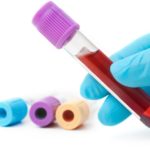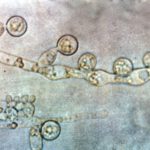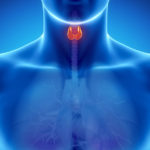Excess bacteria in the upper part of the digestive tract produces gas via fermentation of dietary sugars and starches, that can then lead to symptoms such as bloating, flatulence, abdominal discomfort and nausea, as well as constipation or diarrhoea. SIBO is found to be present in 70% of IBS patients and the build-up of gas in the intestines can be triggered by easily fermentable foods e.g. high FODMAP foods, refined carbohydrates and sugars; by foods which are hard to digest, such as grains, dairy, meat or raw food; and also by insufficient chewing, stress, or over-eating.
The SIBO breath test checks for the production of hydrogen and methane gases, indicating if bacteria have overgrown in in the small intestine, where they are not usually found in large numbers. The results will help to tailor your nutrition programme, according to which type of gas is being produced and usually in conjunction with a stool test, which analyses the health of the colon, or large intestine (see Complete Microbiome Stool Test above).
How to complete the SIBO Test
The SIBO breath test can be completed any day of the week, but requires you to follow specific dietary guidelines for one day beforehand (2 days if you are constipated and do not have a daily bowel movement). After following the restricted diet, you must fast overnight for at least 12 hours before testing. The aim of the diet is to clear any residual fibre from your gut (hence white rice and no fruit, vegetables, nuts or seeds on the menu) and then when you drink the lactulose solution, which is an indigestible fibre, you gain an accurate picture of whether the fibre is fermented by bacteria in your small intestine.
Do not complete the test if you have had a colonoscopy within the past 4 weeks, or taken antibiotics or antimicrobial supplements (such as those containing berberine or oregano) within the past 2 weeks. Continue with any prescription medication, but avoid taking any kind of digestive support products such as digestive enzymes, laxatives, antacids, or any other supplements for at least 3 days before testing. Probiotics should ideally be avoided for at least 1 week, althought the lab only specify one day.
The test takes 3 hours, so set aside a quiet morning to complete it. Brush your teeth as soon as you wake and do not eat or drink anything other than water for the duration of the test. Leave one hour after waking and brushing your teeth before starting the test. Prepare the lactulose drink by mixing the entire pot of lactulose with 250ml water, but DO NOT DRINK IT YET.
Prepare the sticky labels by completing your name, the date, the sample number and ticking SIBO. All you need to add, as you proceed through the test, is the time that each sample is collected, before attaching a sticker to each completed glass tube.
- One hour after waking, brush your teeth and tongue, including the back of your tongue WITHOUT using toothpaste or mouthwash, then rinse your mouth with water.
- See test kit instructions for how to complete breath samples, by inhaling gently and holding your breath for 5 seconds, then closing your mouth tightly around the mouthpiece and exhaling steadily into the attached plastic bag. As you continue to exhale, insert the glass tube into the needle holder, count to two and then remove it, while still exhaling. Do not inhale at any point until the tube has been removed. The tube will self-seal. Label the tube and record the time on the A5 form titled ‘SIBO Collection Schedule.’
- Immediately after collecting the initial baseline sample, drink the entire 250ml lactulose/water solution and then set a timer for 20 minutes. Please avoid drinking any fluids for the next 90 minutes, if possible (ideally until after collecting sample #5). Record the time that you drink the lactulose solution on the test request form (A4 sheet with your name and address on).
- After 20 minutes, collect breath sample #2 and continue to collect samples #2 to #8 at 20 and then 30 minute intervals until you have filled 8 glass collection tubes, labelling them as you go and recording the times on the SIBO Collection Schedule. The remaining two tubes can be discarded.
Please note down any symptoms that you experience during testing on the test request form, which needs to be returned along with the samples.
Once completed, ensure that all tubes are clearly labelled, place them into the bubble wrap envelope provided, then into the sealable section of the specimen transport bag. Place the paperwork in the non-sealable section and then seal everything in the pre-paid courier bag. You can arrange for courier collection but ideally, drop the samples at your nearest NZ Couriers depot on a Monday. Ignore the ‘Pre 8am’ sticker on the courier bag which is for the courier’s attention.
Samples do not need to be refrigerated or frozen, just kept at room temperature.














